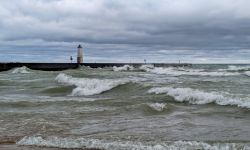Michigan is on thin ice. Get used to it, climate experts say.

Hope is waning for those who hoped to stick an ice shanty on Little Traverse Bay this winter.
The same goes for nearby Torch and Elk lakes, two large inland waters adjacent to the bay. At the height of Michigan winter, all three are so devoid of ice, fishing guide Jim Chamberlin said, “you could launch a boat out there.”
On the kettle lakes of Southeast Michigan, thin ice has law enforcement officials responding to an uptick in on-water emergencies and urging residents to think twice before venturing out to skate, fish or snowmobile.
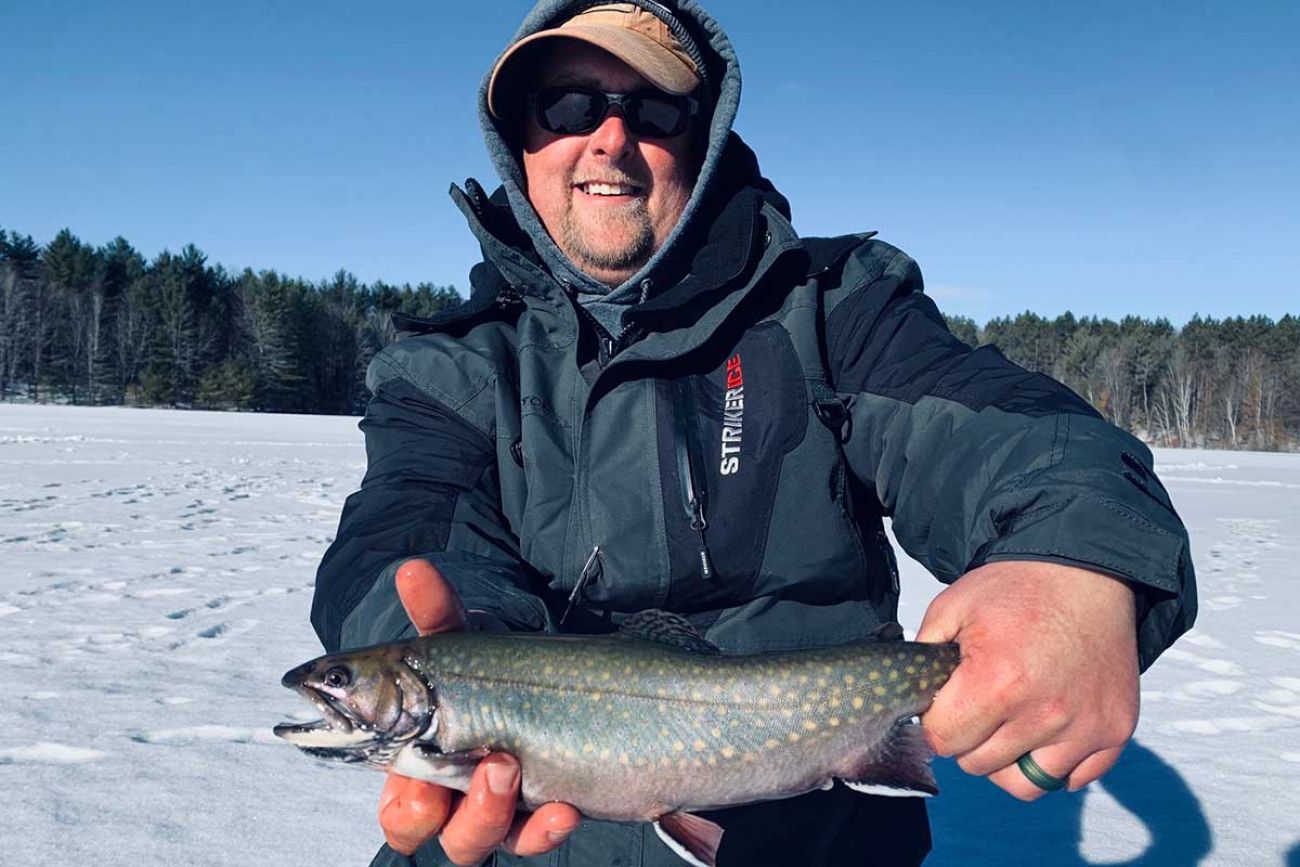
And in Lake Superior, famous for its frigid temperatures, tribal commercial fishers are still setting their whitefish nets on open water. Normally by this time of year, they’d be battling back ice. “Ice doesn’t really stop us from fishing, unless there’s an immense amount,” said Pat Peterson, co-owner of Peterson’s Fish Market in Hancock, “but it makes things a lot easier for us when you don’t have to buck ice.”
Staying safe on the ice
- There is no single litmus test for “safe” ice, and recommended thickness levels for walking on ice vary depending upon the conditions at hand.
- If the ice is clear and newly-formed, the Minnesota Department of Natural Resources recommends a minimum thickness of 4 inches to safely walk. Ice must be even thicker to support heavy vehicles.
- Avoid ice with snow or slush on top. Snow can insulate the lake and thin the ice.
- Check ice thickness using a spud, auger or other tool.
- Tell someone where you’re headed and when you plan to return.
- Consider carrying ice picks to pull yourself out of the water if you fall through thin ice.
- For more ice safety information, visit the Michigan Department of Natural Resources Ice Safety page.
Source: Michigan DNR, Minnesota DNR
Ice cover in the Great Lakes is near record lows, and federal forecasters say there’s little chance it will bounce back to normal. Meanwhile, snowfall across the state has been well below average this winter.
While the absence of ice is likely to help lower water levels on the Great Lakes and ease passage for freighters, it also means more treacherous conditions for people who venture onto the ice, more erosion along the coastline, and trouble for whitefish, burbot and other species that spawn in ice-covered Great Lakes reefs.
Long-term, warming temperatures in Michigan could bring far more widespread and lasting challenges by destroying key northern ecosystems, threatening the state’s $2.3 billion recreational fishing industry, and ushering in new threats to Michigan’s health and safety.
If you’re wondering whether this is a sign of the new normal as climate change progresses in Michigan, scientists say the long-term answer is yes. But in the near term, it’s complicated.
In a new study, researchers at Toronto’s York University warned that if climate change continues apace, many Northern Hemisphere lakes will be permanently ice-free by midcentury. That includes large bays in the Great Lakes, such as Lake Michigan’s Grand Traverse Bay and the Bayfield Bay near Lake Superior’s Apostle Islands.
Ice cover data going back to the 1800s indicates that both bays are already less likely to freeze over each winter than they were in the past.
The historical record is clear, said Sapna Sharma, a York biology professor and expert on global climate impacts: “Winters are changing quickly in the Great Lakes region.”
This year, Sharma said, is a good example of what’s to come.
Long-term ice trends are clear
But in the Northern Lower Peninsula, Chamberlin, the fishing guide, doesn’t see this year’s thin ice as an example of climate warning.
“It’s random,” he said, noting that two feet of ice covered Antrim County’s Torch Lake by this time in 2014, as a “polar vortex” brought record ice cover to Lake Michigan. “These just aren’t places that get ice every single year.”
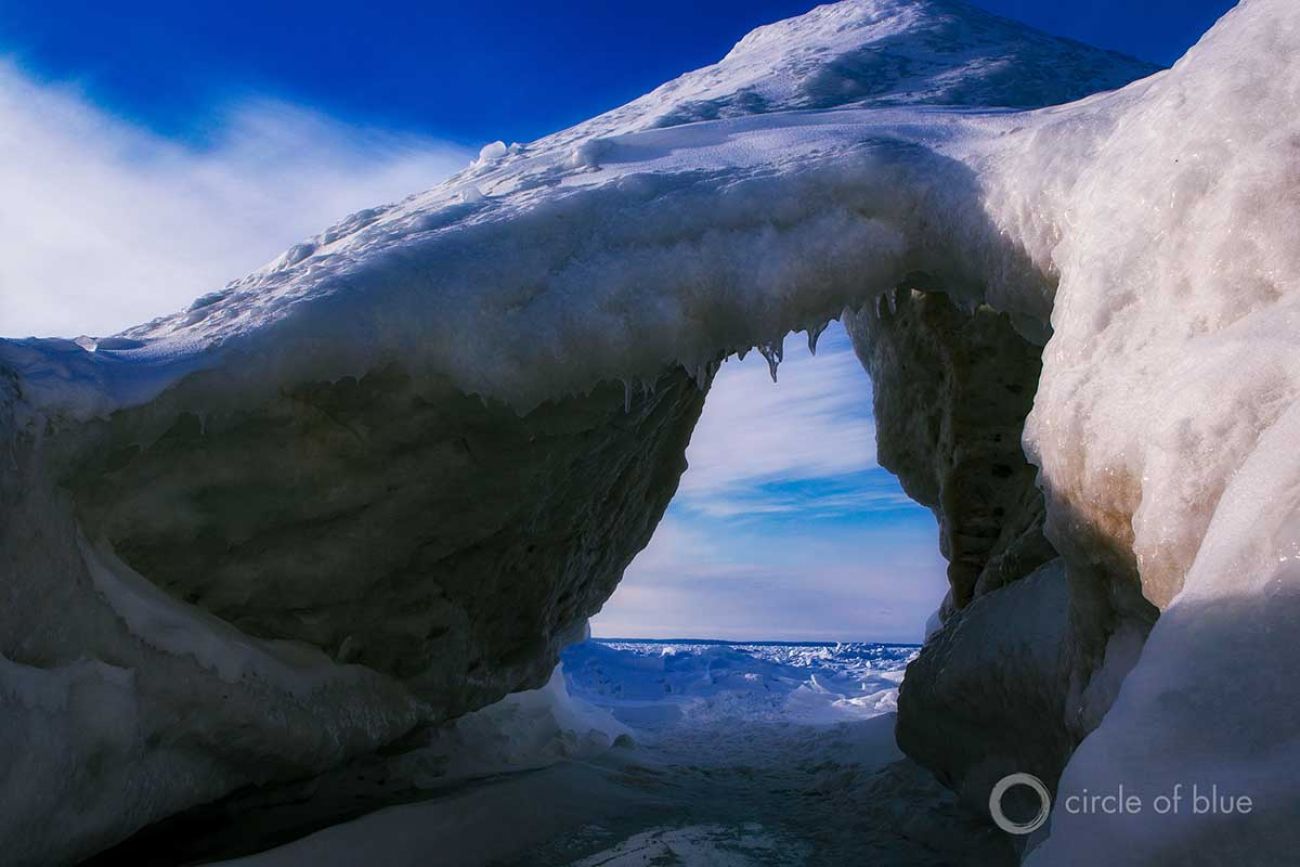
Chamberlin’s observation highlights the difficulty climatologists have in communicating climate change to residents of the Great Lakes region, where key climate signals such as ice cover and Great Lakes water levels can swing wildly from year to year.
It’s a significant difference from, say, coastal states, where relentlessly rising seas are a clear and consistent harbinger of a changing climate.
In winter of 2019, for instance, average ice cover across the five Great Lakes topped out at 80.9 percent, well above the long-term average of 53.3 percent, according to data from the National Oceanic and Atmospheric Administration. Then, last winter, it plummeted to 19.5 percent.
By Sunday, a cold snap had increased ice cover of the five Great Lakes to 15.6 percent — a rebound from single-digit coverage (7.2 percent) last week, but still about half the average coverage for this time of year.
Water levels, meanwhile, also have fluctuated from record lows in 2013 to record highs in 2019 and 2020.
But within the wild zigs and zags, NOAA scientists see a clear trend in the 48 years since they began keeping track of Great Lakes ice cover: The big lakes are losing their ice.

Average Great Lakes maximum ice cover levels have declined by about 5 percentage points per decade since record keeping began in 1973, said James Kessler, a scientist at NOAA’s Great Lakes Environmental Research Laboratory in Ann Arbor. If that trend continues as the planet warms, today's average yearly maximum of 53 percent ice cover would dwindle to 38 percent by midcentury.
Preliminary research indicates year-to-year ice coverage may also be growing increasingly erratic, Kessler said, with "fewer years near the average and more years that are really high or really low."
NOAA forecasters predict only 30 percent of the Great Lakes’ surface will ice over this winter. That’s low, but still well above the 2002 record low of 11.9 percent coverage.
Lake Erie is expected to get the most coverage, at a maximum of 63 percent, while just 7 percent of Ontario is expected to freeze over.
Warming waters threaten fish
Chamberlin said his business is steady despite the lackluster ice cover. That’s in part because the COVID-19 pandemic has fueled an outdoor sports renaissance, and the Canadian border closure has diverted some would-be Lake Simcoe ice-fishing anglers from Ontario to Michigan lakes instead.
He’s disappointed that he can’t bring ice-fishers out to target big fish like walleye and burbot in large, deep lakes that haven’t iced over, but there is still plenty of perch fishing on smaller inland lakes that have developed a safe ice layer, he said.
When people call to inquire about fishing on the bay, he puts them on a waitlist but warns them not to get their hopes up.
“I just tell them, you know, ‘There's other things to do here, you might want to think about that,’” he said.
Fisheries scientists say they’re worried about short and long-term consequences for Michigan’s ecosystems as the warming trend progresses.
Some species of Great Lakes fish, such as whitefish and burbot, deposit their eggs in ice-covered reefs. Without a protective layer of ice, said Gary Whelan, a program manager with the Michigan Department of Natural Resources, the eggs drift away and fail to hatch.
That’s particularly troublesome for whitefish, a native species that is already struggling to maintain a foothold in the changing Great Lakes ecosystem.
And the impact of a warmer winter will bleed into the summer, Whelan said, bringing bad news for other coldwater fish such as trout and steelhead.
“If you have a warmer water column in the winter,” he said, “it’s not going to take very long for that water to warm up in the summertime."
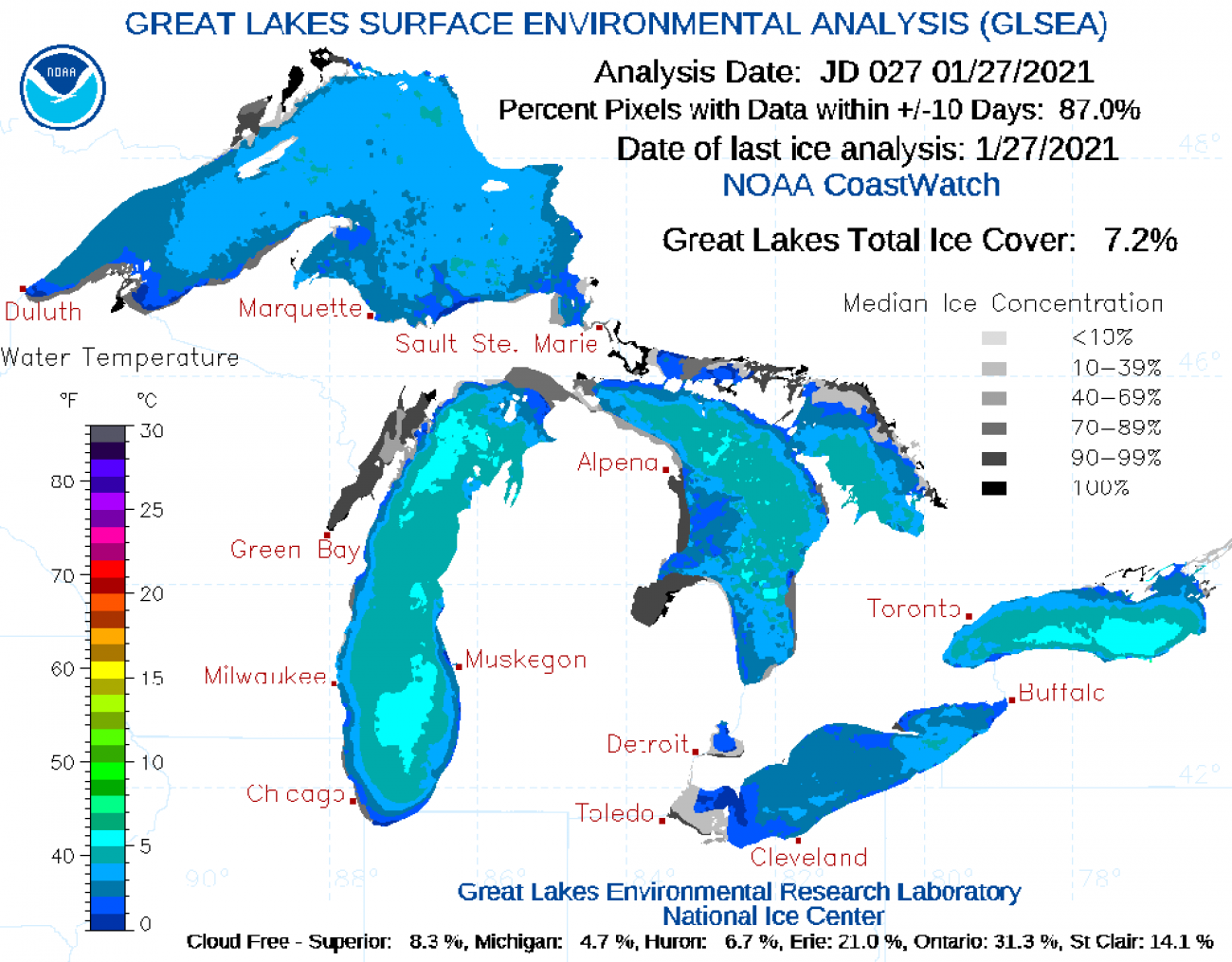
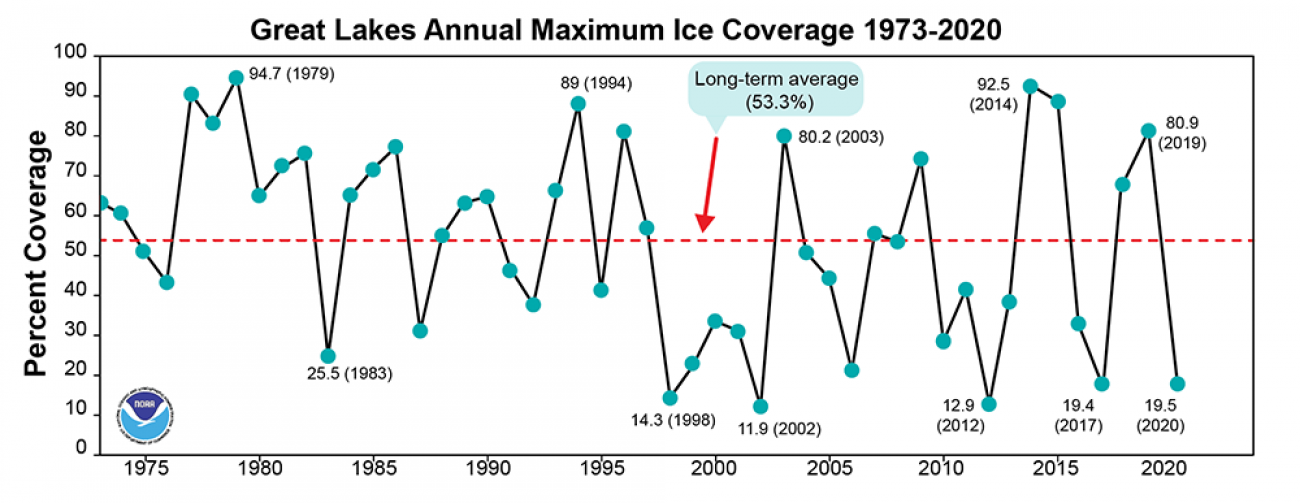
Many Michigan streams are already losing their ability to support coldwater-dependent species — a consequence of a warming climate and widespread logging in decades past that robbed Michigan’s waterways of cooling shade.
Brook trout are “barely hanging on” in some southern Michigan waterways, Whelan said. Every warm winter loosens their grip.
Related: How we know Michigan will lose lake ice if we don’t change our ways
Dennis Eade, executive director of the Michigan Steelhead and Salmon Fishermen’s Association, said fear that Michigan’s iconic coldwater fish will perish as the world warms “keeps me awake at night.”
And fish are just the beginning. Climate experts warn Michiganders can expect a host of native plants and animals to struggle, while new species creep northward from warmer climates.
Pathogens that historically haven’t been able to survive in Michigan’s cold winters are moving north. That could mean ever-worse outbreaks of mosquito-borne diseases such as eastern equine encephalitis, a potentially deadly disease that’s on the rise in Michigan.
Harmful algae blooms, which thrive in warm water, also pose a growing problem in northern waterways including Michigan’s lakes. The foul-smelling green blooms release a liver toxin that can kill pets and cause headaches, abdominal pain, nausea, blisters and even pneumonia in humans.
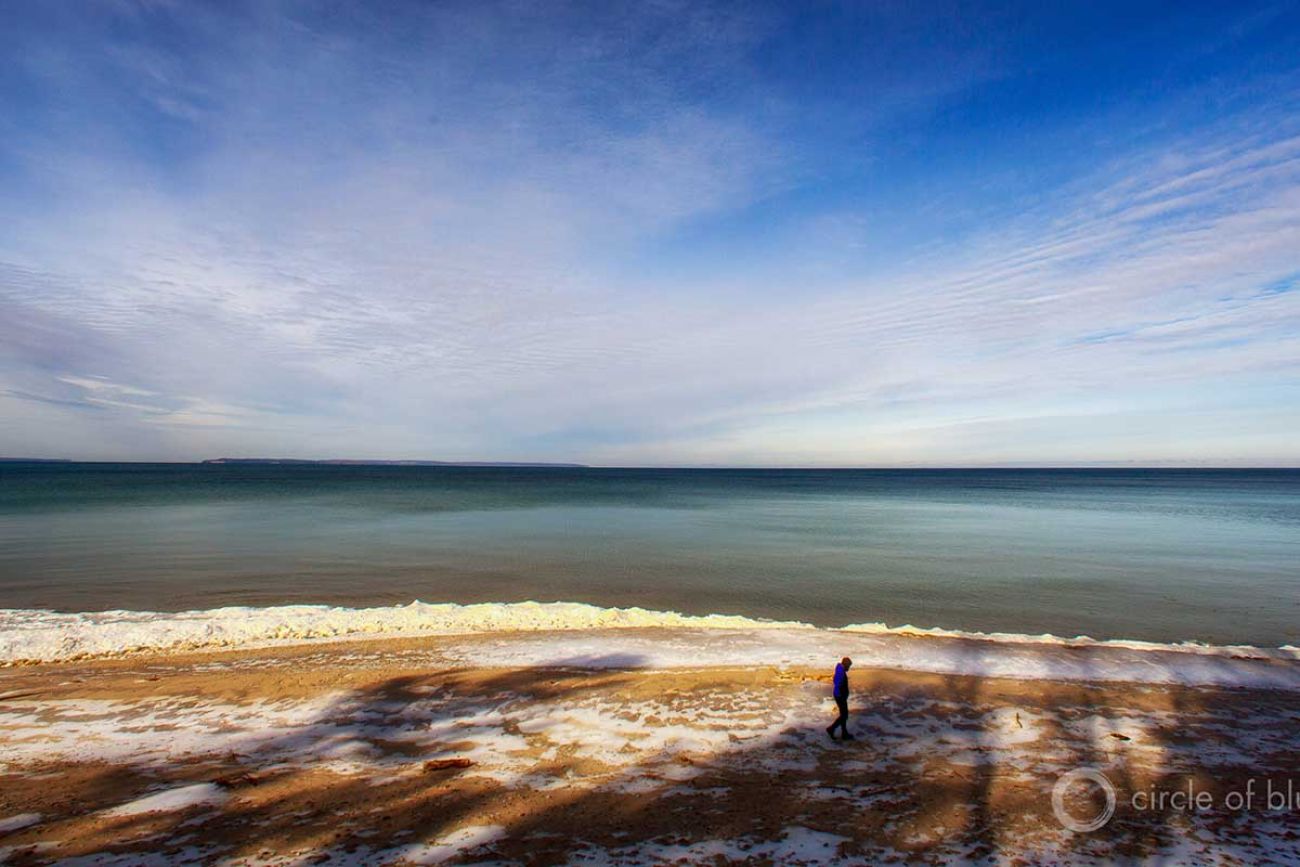
‘When in doubt, don’t go out’
Winter drownings pose another growing threat.
Chamberlin, the northern fishing guide, said he worries about inexperienced anglers he frequently sees venturing onto thin ice, not realizing the dangers.
He’s right to worry. Winter drowning incidents will become more frequent in northern climates as winters yield less predictably-thick ice, said Sharma, the York climate expert. She led a research team that analyzed decades of data on fatalities from 10 countries, concluding that warming temperatures increase the danger of venturing out on the ice.
Michigan is experiencing that trend in real-time. Just last week, a 26-year-old man died in Oakland County’s Wolverine Lake, after his snowmobile fell through the ice. Days earlier, a 64-year-old Upper Peninsula man drowned after his off-road vehicle plunged into Lake Michigan’s Big Bay de Noc.
In a typical winter, Oakland County Sheriff Mike Bouchard said, his officers respond to two or three reports of people falling through ice on one of the county's 450 lakes. So far this winter, they have already notched four, including the death on Wolverine Lake.
He said neighboring law enforcement agencies are seeing similar upticks, prompting him to issue a warning:
“When in doubt, don’t go out,” Bouchard said, adding that it’s not safe to walk on ice thinner than four inches thick, and snowmobilers and ATV riders should wait until it’s 8 inches thick.
It’s possible to check ice thickness by drilling through the ice with an auger or ice chisel.
Spokespeople for the U.S. Coast Guard said they, too, are concerned as the Great Lakes begin to accumulate thin near-shore ice layers. Those venturing out onto the Great Lakes’ scarce ice should be cognizant of the risk, Coast Guard officials said, and let someone on land know where they're headed and when they plan to return.
On the bright side, less ice makes it easier for the Coast Guard to clear Great Lakes fishing channels, said Lt. Jeremiah Schiessel, spokesperson for the Coast Guard in Detroit. Normally, his sector’s Coast Guard cutters would be busy clearing ice from shipping routes between Port Huron and Lake Ontario, but ice has only just begun to accumulate in small, thin floes, he said, so ice-breaking operations have been largely unnecessary.
And there’s another upside to the mostly-iceless winter, said Guy Meadows, director of the Marine Engineering Laboratory at Michigan Technological University's Great Lakes Research Center: The open water will evaporate through the winter, driving down Great Lakes water levels.
That’s good news for shoreline residents beleaguered by flooding and erosion as lake water levels remain well above average, despite a retreat from the record highs of 2019 and 2020.
But there’s a downside too, Meadows said: With precious little ice to shield the shoreline from waves, Michigan’s coasts are more vulnerable to erosion during winter storms.
In the long term, Sharma said, Michiganders will have to adapt to more winters like 2021. We can start by lowering our expectations about when winter sports season begins and ends, she said.
“If you went ice fishing every Christmas or March break, that might not be possible anymore,” Sharma said. “We’re going to have to be flexible.”
Michigan Environment Watch
Michigan Environment Watch examines how public policy, industry, and other factors interact with the state’s trove of natural resources.
- See full coverage
- Subscribe
- Share tips and questions with Bridge environment reporter Kelly House
Michigan Environment Watch is made possible by generous financial support from:
Our generous Environment Watch underwriters encourage Bridge Michigan readers to also support civic journalism by becoming Bridge members. Please consider joining today.
See what new members are saying about why they donated to Bridge Michigan:
- “In order for this information to be accurate and unbiased it must be underwritten by its readers, not by special interests.” - Larry S.
- “Not many other media sources report on the topics Bridge does.” - Susan B.
- “Your journalism is outstanding and rare these days.” - Mark S.
If you want to ensure the future of nonpartisan, nonprofit Michigan journalism, please become a member today. You, too, will be asked why you donated and maybe we'll feature your quote next time!


